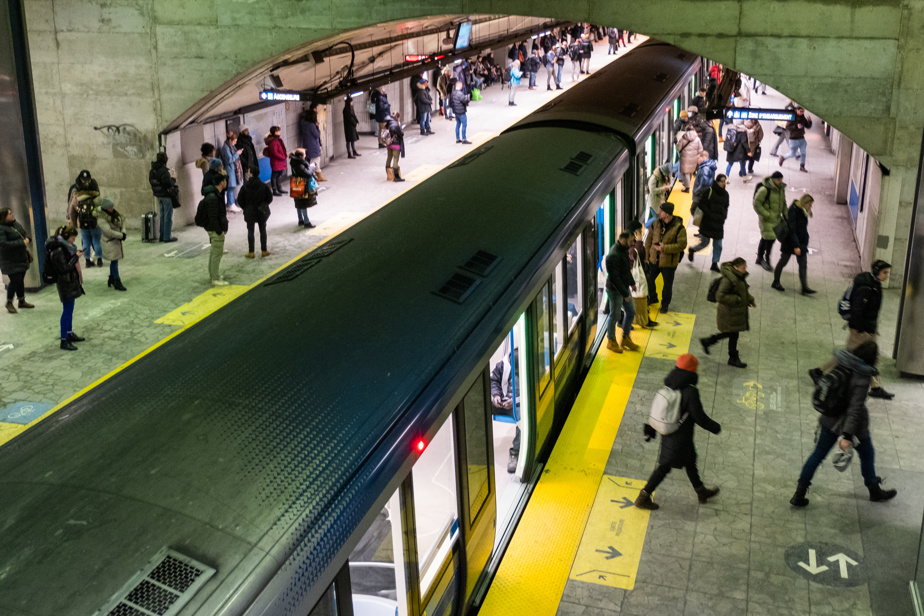A model to review

PHOTO HUGO-SÉBASTIEN AUBERT, LA PRESSE ARCHIVES
The president of the STM, Éric Alan Caldwell
“We are here to intervene, but where we need help is with the management of cases of mental health problems and drug addiction. We have several vulnerable users who have serious health problems and this is one of the causes of the deterioration of the perception of security in our network,” affirms the president of the STM, Éric Alan Caldwell, in an interview with The Press. While he salutes their daily work, he affirms that the health network and the Montreal community fabric should have “more resources” devoted to the metro in the context. “It’s a whole intervention model to be reviewed, with a greater volume of interventions,” estimates Mr. Caldwell. Ultimately, if there is no support behind our interventions, it is just a revolving door. And we are not resolving the issues structurally. »
The example of Philadelphia
For the carrier’s security director, Jocelyn Latulippe, public health “must be more at the table”. “Since the pandemic, we have had people who literally live on the network. We are not equipped to support these people,” he says. According to him, the example of Philadelphia, where the number of incidents fell by a third after the targeted hiring of social workers, “that’s where we want to go.” To date, the STM has eight social workers, but would like to double their number next year. The company also already has three units of the Metro Intervention and Consultation Team (EMIC), made up of a social worker, a police officer and a special constable. “We could have six EMIC teams because the load is too heavy. We have somewhat reached our limit,” notes Mr. Latulippe, who also hopes that we will reshuffle the cards.
Housing, again and again
“This way out of the crisis cannot come from the STM alone. We have to address the problem at the source,” judges professor of urban studies and specialist in public transport issues at UQAM Florence Junca-Adenot. In his eyes, the real solution is not simple and involves several levels of government, but it is nevertheless the strongest: “we must accelerate the development of social and affordable housing, period. » “In the meantime, in the metro, it takes more social support agents to find reasonable accommodation for vulnerable people. This can be access to shelters, but also support for progress and social reintegration, or even, in certain cases, hospitalizations. But we must act more quickly,” thunders the professor.
The metro often becomes a “refuge”

PHOTO BERNARD BRAULT, LA PRESSE ARCHIVES
“If the metro network often becomes a refuge [pour les personnes en situation d’itinérance]it’s because in several sectors, these people have no other place to go,” underlines the general director of Trajectoire Québec, Sarah V. Doyon.
According to the general director of Trajectoire Québec, Sarah V. Doyon, it would be interesting to increase the number of supervised injection sites (SIS) around stations where consumption has become an issue, “to prevent elevators, as we often seen, become sites for the injection of wealth.” “It’s the same thing for homelessness in general: if the metro network often becomes a refuge, it’s because in many sectors, these people have no other place to go. If we offered more services, we wouldn’t be here,” says Mme Doyon. For the rest, she adds, “STM staff must be more visible.” “We don’t necessarily see the effects of the recent increase in constables yet, but it will certainly come. And you will have to feel it. »
Who says safety says cleanliness
At the University of Montreal, transport planning expert Pierre Barrieau believes that several small actions can ultimately change users’ perception of safety, even if the problem remains “excessively broad”. “Having well-lit stations, without nooks and crannies, is one aspect. Cleanliness also, despite everything, gives a feeling of security. And for me, having an attendant at the entrance to all the stations, which we see less in the evening, is essential,” he continues. “Either we decide to improve our social services to better help these people, or we adequately fund the STM so that it can better take care of vulnerable users in its network. Otherwise, it will never be resolved,” concludes Mr. Barrieau, saying he hopes for the mobilization of all stakeholders in this issue.
Read Maxime Bergeron’s column “A day in the metro”
Learn more
-
- 38%
- Last month, a survey carried out by the STM showed that the feeling of insecurity affected 38% of users. In other words, barely two thirds (62%) of users currently feel safe on the metro and buses.
Source: STM
- 160
- This is the number of special constables currently employed by the STM, which wants to have 200 starting next winter. They receive training in front-line assistance to vulnerable people.
Source: STM
